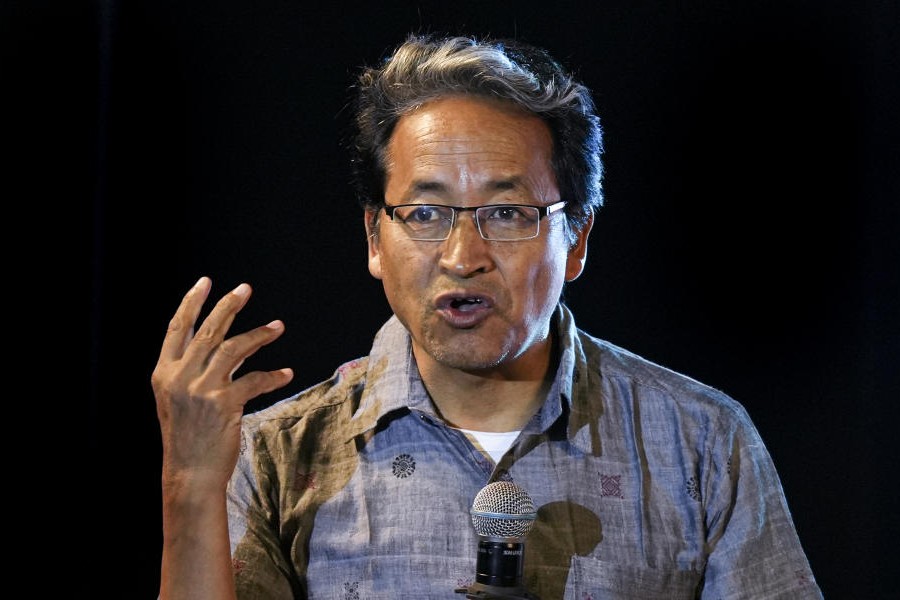A girl pretends to be driving a car in the classroom and a boy blows a whistle, playing at being a traffic policeman. Their classmates absorb themselves in a game of ludo or in feeding their dolls.
Unruly behaviour that would earn the children a sharp rebuke and their parents a summons from the principal?
Perish the thought. Rather, such scenes of fun and games could become an approved feature of school education —under teacher supervision, of course — suggests the NCERT’s latest look at teaching methods in schools.
A document on “toy-based pedagogy” developed by the NCERT, the national body that prepares school curricula and textbooks, has advocated the use of toys, games and role-playing from pre-primary to Class XII. Currently, just a handful of private schools use such teaching methods, in a limited way and mainly in junior classes.
A game of ludo between very young schoolchildren can promote numerical understanding, decision-making and concentration, the NCERT document says, giving an instance.
A model of a car may be used in physics class for senior children to illustrate the measurement of distance, velocity and acceleration. Kite-flying to learn basic aerodynamics, anyone?
The document’s recommendations are expected to be included in the National Curriculum Frameworks (NCFs) — for the foundational and secondary stages of school learning and for teachers’ education — that the NCERT is developing. The CBSE follows the NCERT curriculum, and so do most state school boards, with modifications.
Toys and games
According to the document, the toys should be cheap and made locally, with eco-friendly material.
Popular toys and puppets that children love to play with should be used, such as tops, dolls, racing cars, rattles, kites, dancing-and-singing puppets, firkis (pinwheels or paper fans), magic cards and magic snakes. At the foundational stage (pre-primary to Class II), stuffed dolls or soft toys may be used to make the class “interesting and joyful”.
Among the games recommended are luka-chuppi (hide-and-seek), chess, ludo and other board games.
In the spirit of the times, some of the document’s suggestions touch on ancient epics.
“To understand the concept of (the) laws of reflection in a play-way method and to correlate the scientific concept learned with ancient epic Mahabharata, the toy ‘Arjun Ka Lakshya’ can be used. The player has to hit the same target (fish eye) with the reflection of a mounted laser beam caused by a mirror,” it says.
‘Pretend toys’
“Children naturally like to pretend. Examples of this type of play include pretending to feed a doll, dressing up like parents or superheroes, pretending to be driving the car or whistling like traffic police or working like a farmer in the agricultural fields, etc,” the document says.
“The parents or teachers can encourage role-play by taking the child’s favourite story and getting the child and others to act it out. By slowly introducing new themes and gradually changing parts of the play, you can guide your child towards independent, creative, dramatic play.”
It adds: “When children use blocks, dolls, animal toys, balls, mini-cars, or pretend toys, they start creating stories and living out scenarios in their mind. Children construct knowledge from their surroundings. Toys give them opportunities to explore science, technology, engineering, arts, and mathematics.”
All this can succeed if, first, the textbook writers and teachers are on board, the NCERT has realised.
“For example, if you are writing a chapter which includes a story of ‘a small child who helps others’ for Class I language textbook, you may suggest in the chapter itself that this story may be told using dolls (mother doll, child doll, etc), so that children will enjoy listening to stories observing dolls performing various characters,” the document advises the textbook writers.
Changing mindsets
However, the main challenge is the need to change the mindsets of the majority of teachers and parents, the document says, since most of them might consider toys a frivolous way of wasting classroom time.
“At present, toy-based pedagogy is considered a non-conventional method. The task is to mainstream it, by consistent engagement by the government agencies with teachers, parents and the community,” Y. Sreekanth, principal of the Regional Institute of Education, Mysore, said.
Once the children’s parents have been thoroughly converted to the idea, the document suggests, the schools should encourage community members and parents to procure some of the toys for them.
But all this high-falutin’ talk linking toys to “concepts” and “pedagogy” is for the benefit of the teachers: the children must not be burdened with any of that heavy stuff, Sreekanth warns.
For the children, it should just be fun, and some learning along the way.











